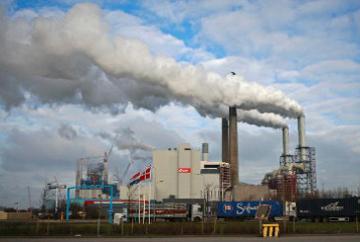Beijing February 14 2022: China has raised the benchmark levels of energy efficiency needed to be achieved by its primary aluminum industry in the next three years, requiring more than 30% of installed capacity to follow new energy standards by 2025.
In a document issued Feb. 11 by China’s National Development and Reform Commission, or the NDRC, China is looking to boost energy efficiency levels of energy-intensive industries, including copper and zinc.
A L S O || R E A D
Besides primary aluminum, more than 50% of smelting capacity in the copper, zinc and lead industries should follow the new energy efficiency level by utilizing energy saving and decarbonization options, the document said.
Capacity not meeting the new efficiency benchmarks has to be removed, the NDRC said.
NDRC in the Feb. 11 guidance focused on energy saving and decarbonization of energy-intensive industries including steel, ferroalloy and nonferrous metals sector.
By the end of 2020, about 40% of copper and lead smelting capacity was higher than the energy-efficient benchmarks, while 10% capacity was lower than the baseline level.
In zinc, about 30% smelting capacity was higher than benchmark level and 15% was lower than the baseline level.
Meanwhile, 10% of primary aluminum smelting capacity was higher than benchmark efficiency levels, while 20% was lower than the baseline level.
The baseline level of alternating electricity consumption was set at 13,350 KWh/mt and the benchmark level was 13,000 KWh/mt for primary aluminum liquid production, according to the document.
The NDRC and other three departments last year jointly released energy-efficiency targets for industries that have massive energy consumption and considerable carbon emissions.
This standard came into effect Jan. 1, a move seen as to keep in check runaway development of projects with enormous pollution and energy footprint. This was in line with an action plan released by the NDRC to propel energy saving and decarbonization through strict energy-efficiency targets for 2021-2025.
Power consumption
Power consumption by China’s nonferrous metals smelting industry totaled 700.2 billion KWh in 2021, up 5.4% from a year earlier, taking up 8.4% of the country’s total, according to latest data released by the China Electricity Council.
China’s primary aluminum output rose 4.8% on the year to 38.5 million mt in 2021, which would equate to 525.5 billion KWh of electricity consumption, or 6.3% of China’s total power consumption, S&P Global Platts calculations showed.
It takes 13,650 KWh of electricity to produce 1 mt of primary aluminum liquid, according to the standard released by China’s Ministry of Industry and Information Technology in March 2020.
Several provinces and regions have forbidden any form of capacity addition or canceled preferential electricity rates to primary aluminum smelters effective from Jan. 1 as part of plans to lower energy consumption and increase efficiency standards.










